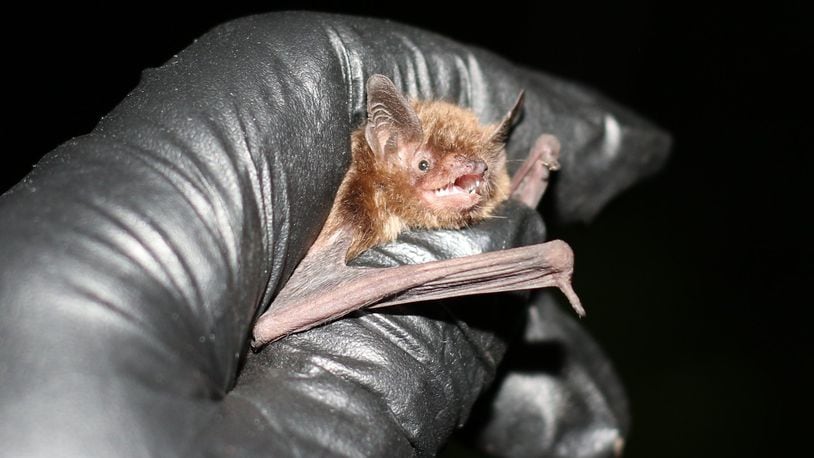Female Indiana bats need forest habitat where they form colonies in summer, roosting in older trees under loose bark, giving birth to a single pup, and foraging for insects along stream corridors. That means it’s important for young trees to grow up to replace old trees as they die off. And while that’s a natural process, sometimes non-native, invasive plants take over, and their impact can literally alter the landscape.
Invasive bush honeysuckle, introduced during the late 1800s for landscaping and, ironically, wildlife habitat, has become common throughout Ohio and the eastern United States. Bush honeysuckle is an aggressive invasive plant that leafs out earlier in the spring than native plants and stays green well into the fall after most plants are dormant. Honeysuckle shades out native plants, preventing the growth of young native tree species needed by bats and other forest wildlife.
That’s what managers began to see at Wright-Patterson. Darryn Warner, the base’s natural resources program manager, noticed that native tree saplings in the understory were being out-competed by honeysuckle, and without management, few young trees would replace older trees as they die off. Over time, Indiana bat habitat could become significantly degraded, or lost altogether. He wanted to address the issue quickly, and thought that the Sike’s Act would be the tool to get it done.
The Sike’s Act is a law that requires all military installations to “provide for the conservation and rehabilitation of natural resources.” Under the Sike’s Act, Wright-Patterson and the U.S. Fish and Wildlife Service became partners, with the Air Force funding service work to control invasive species and jump-start forest regeneration in treated areas.
With staff, equipment and expertise from Big Oaks National Wildlife Refuge in Indiana, work began. Crews cut large honeysuckle bushes and treated the area to prevent resprouts on about 115 acres at Wright-Patterson. Native trees like shellbark hickory, favored by roosting bats as maternity colony sites, have been planted. More work is planned over the next five years.
So how is the Indiana bat faring at Wright-Patterson since this work began? With funding from Wright-Patterson, the Service’s Ohio Ecological Services Field Office surveyed the Indiana bat population during the summer of 2017. Using mist nets to capture and release bats, service biologists found a total of 85 individual bats, including five Indiana bats. Adult female Indiana bats were fitted with radio transmitters and tracked to roost trees along the Mad River, on Wright-Patterson property. Biologists observed the trees at dusk, and as many as 17 bats were observed emerging from the trees in one night, confirming that a maternity colony of Indiana bats is still present at Wright-Patterson. This colony has persisted now for at least 24 years at the base, indicating long-term suitable habitat is present.
During the mist net survey several other exciting finds occurred. Biologists were able to confirm the presence of a male northern long-eared bat, a federally listed threatened species, multiple silver-haired bats, and an evening bat. This was the first mist net survey to detect them despite considerable prior effort.
Indiana bats, northern long-eared bats and other cave-hibernating bats nationwide face the daunting threat of white-nose syndrome, a fungus that infects bats during hibernation and has killed millions of bats in the past decade. Ensuring that high-quality summer habitat for maternity colonies is a critical step in helping the bats that do survive white-nose syndrome recover and reproduce during the summer. Wright-Patterson is doing their part to ensure these small pilots have a safe landing spot this summer.
About the Author
